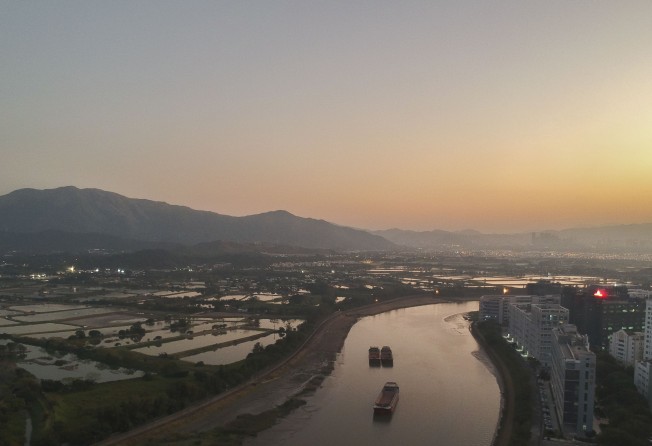
Four challenges ‘Greater Bay Area’ planners must overcome to ensure success
Feng Da Hsuan and Liang Hai Ming highlight some issues for planners to consider for the Greater Bay Area, including how to tackle the complexities of the massive project, attract talent and prevent a brain drain in smaller cities, and ensure a safety net for failure

The release of a “Greater Bay Area” development plan for linking Hong Kong and Macau with nine cities in Guangdong province is expected to be released early this year. The plan may be a sign of China’s ascent, but this area will be starkly different from, for example, the San Francisco, New York and Tokyo bay areas. While it is all within one nation, it also links two “systems”, three currencies and multiple cities. This makes the plan highly convoluted, and such complexity could pose far more challenges than those found in other bay areas.
Here are four potential issues. First, because the Greater Bay Area consists of cities in Guangdong province, plus Hong Kong and Macau, any kind of amalgamation will be one of multiplicities, rather than natural affinities, and this could mean additional obstacles to the flow of talent, finance, logistics, information and so on.
It has been suggested that the euro-zone experience could provide a good lesson where, to coordinate nations of vast differences as seamlessly as possible, it was necessary to jointly organise and empower a “coordination team” to overcome the difficulties. Indeed, having such a team, at least in principle, should lead to greater affinities. This is why a single currency, the euro, and a single political system known as the European Parliament were established.
One obvious difficulty that the euro zone faced is that the economically weaker nations within it, such as Greece and Portugal, raised their debt levels greatly while under the euro-zone protection umbrella. The actions of these nations resulted in a series of debt crises which led to doubts about the sustainability of the euro zone, roiling financial markets, including those outside Europe. The European debt crisis and Brexit, plus the drama of potential exits by Greece and the Netherlands, have been directly or indirectly due to such actions.

These nations have chosen to leave, or have considered leaving, the euro zone so they can individually decide on exchange rates in order to increase exports and promote economic development. How to overcome or prevent the same fate in the Greater Bay Area is something that needs to be addressed upfront.
Also, the Greater Bay Area may not be able to attract talent within China and worldwide for sustainable development. It will take much more than just money and new projects to make the area a global centre of technological innovation, advanced manufacturing and maritime, finance and trade; what is needed is talent across the board and a global mindset.
There are two main issues to address in this respect. The first is to understand that the vision and ideas of foreign talent, especially people from Europe and North America, are quite different from those in China. Besides requiring high-paying jobs, comfortable living conditions and a pleasant working environment, these people also want a clear project mission, a step-by-step plan and well-designed project funding.
Unfortunately, this is the opposite of how Chinese operate. Generally speaking, while Chinese may have an initial grand vision, they tend to “plan along the way” rather than long-term and without already designated funds. The leadership of this grand development scheme will need great wisdom to bridge the gap.
Second, in euro-zone nations, due to workers’ low wages in the “have-not” nations, talent and indigenous finance tend to flow naturally toward the “haves”, causing a downward spiral for the others, making them even poorer. A similar situation may occur in the Greater Bay Area, where talent in cities outside Guangzhou, Hong Kong and Macau could flow towards those three. This could force such cities to institute favourable policies to retain indigenous talent, which could widen the gap between rich and poor in those cities, resulting in social instability.
The Greater Bay Area could also affect the surrounding regions. Developing the bay area could have a beneficial effect on surrounding, less-developed areas. However, an undesirable “echo effect” may occur; that is, production in those areas could flow back into the Greater Bay Area because of the emphasis on its development, causing the surrounding regions to suffer a loss of resources and production.
Finally, to become a truly successful world-class technological region, there must be a safety net for failure.
Across the world, whether in science, technology or entrepreneurship, failure is the norm and success the exception. If a region allows innovators to fail without a safety net to allow them to rebound, it will not only destroy innovation but also the innovative spirit. This safety net could be in the form of the protection of company dissolution, bank arrears as well as tax burdens. In the United States, San Diego is a successful biotech innovation centre, and one reason for its success is its robust safety net.
It is also important to underscore that the Greater Bay Area will not be the sole new innovation centre in China. Without a safety net, those who want to and are able to rebound may be attracted to other centres. It must be remembered that failure is not forever. After all, innovators who are willing to try again probably have enough energy, creativity and wisdom to succeed in the future.

It is our earnest hope that the Greater Bay Area development plan will address some or all of the challenges mentioned here.
We firmly believe that the designers have the wisdom, experience and vision to create a successful Greater Bay Area with Chinese characteristics, and propel it into the ranks of world-class bay areas internationally.
Feng Da Hsuan is senior adviser of the China Silk Road iValley Research Institute. Liang Hai Ming is chairman and chief economist of the institute